Located at the very bottom of Australia and separated from Melbourne by the Bass Strait, Tasmania is a unique place to visit. Are you wondering how to plan your Tasmania itinerary? No need! Here is the perfect Tasmania road trip route:
- Stop 1: Hobart
- Stop 2: Bruny Island
- Stop 3: Richmond
- Stop 4: Port Arthur
- Stop 5: Maria Island
- Stop 6: Freycinet National Park
- Stop 7: Bicheno
- Stop 8: Bay of Fires
- Stop 9: Halls Falls
- Stop 10: Little Blue Lake
- Stop 11: Bridestowe Lavender Estate
- Stop 12: Launceston
- Stop 13: Stanley
- Stop 14: Cradle Mountain
Can I Travel Around Tasmania Without A Car?
Doing a trip around Tasmania is best enjoyed in a car or campervan.
This is because many of the best tourist spots in Tasmania are in remote and rural areas.
Whilst it is possible to travel between cities and large towns by coach (Tassielink), you would struggle to get to areas like Cradle Mountain and Bay of Fires without your own vehicle.
For finding the best deals for car and campervan hire in Tasmania, use Vroom Vroom Vroom.
In my opinion, visiting Tasmania without a car would not give you the opportunity to see the best of the state.
Driving in Tasmania is not difficult, due to wide highways and quiet roads.
Domestic flights arrive in Hobart and Launceston daily, and if you’re flying interstate I can highly recommend Flyparks for airport parking in your home state.
Tasmania Road Trip Map
How Many Days Do You Need in Tasmania?
To see everything on this Ultimate Tasmania Road Trip Itinerary, you will need between 7 days and 10 days.
You could even spend 14 days on this Tasmania itinerary, which would give you a little more time in each destination.
Stop 1: Hobart
Tasmania’s waterfront capital Hobart is the first stop on your Tasmania travel itinerary.
Hobart is famous for art, culture, great food and maritime history.
When people ask ‘How Many Days Do You Need for Hobart?’, I say spend 2-3 days to experience everything the city has to offer.
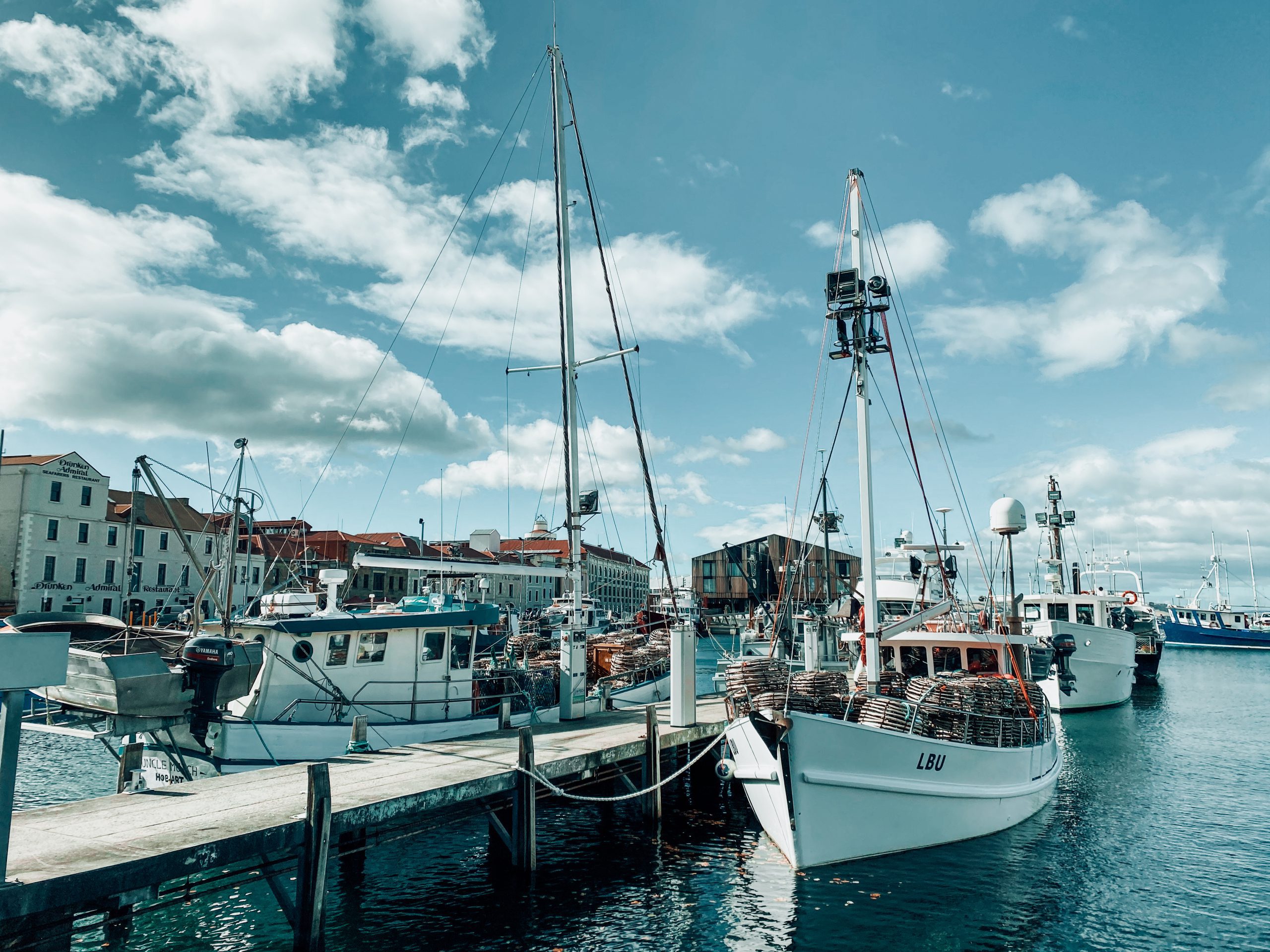
Must do activities in Hobart include visiting MONA, Salamanca Market, Kunanyi (Mount Wellington), Cascades Female Factory, historic Battery Point & The Royal Tasmanian Botanic Gardens.
Hobart is a great place to start your Tasmania family holiday, with loads of child friendly activities available.
For food and drink, eat at Born in Brunswick for brunch and Fico for dinner.
Do a tour and sample some beers at Cascade Brewery, experience a Tasmanian whisky tasting at Lark Distillery and check out Tasmania’s Oldest Pub.
This Tasmania trip itinerary starts from Hobart.
However, if you want to do the Tasmania trip itinerary from Devonport (Spirit of Tasmania ferry from Melbourne), start at Stop 13 (Stanley) > Stop 14 (Cradle Mountain) > Stop 1 (Hobart) and then follow the list as usual.
Stop 2: Bruny Island
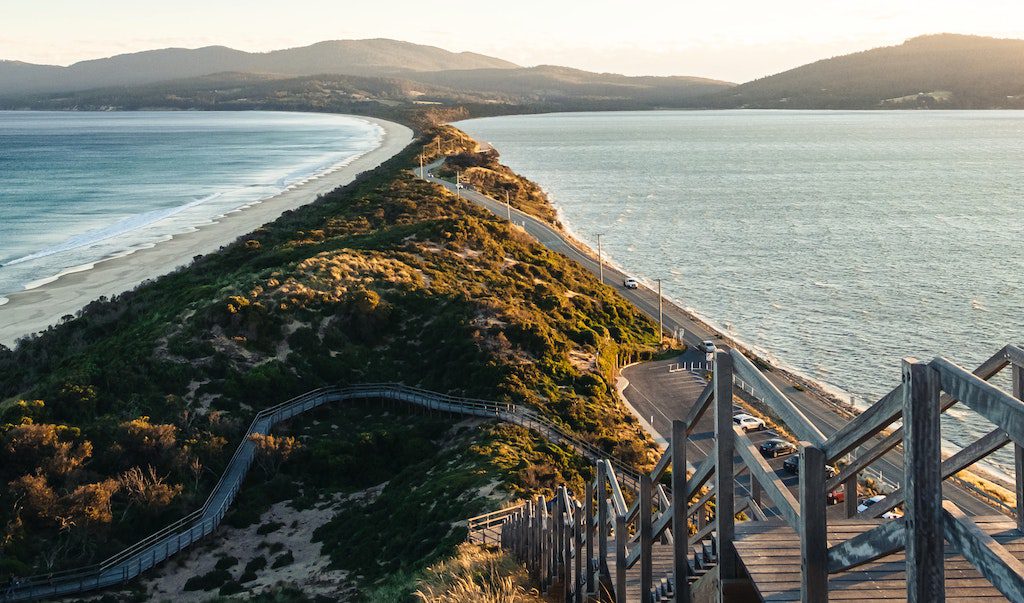
The second stop on your Tasmania self drive itinerary is Bruny Island.
Bruny Island is a beautiful spot an hour south of Hobart.
The small island is home to stunning beaches and bays, as well as great artisan food and cultural landmarks.
To get to Bruny Island, you need to get the ferry from Kettering with your vehicle (the crossing is short – 20 minutes).
The best things to do on Bruny Island include visiting The Neck, a small isthmus of land that connects North & South Bruny Island.
Don’t miss Get Shucked, a fresh oyster bar that’s always busy along with the well loved Bruny Island Cheese Co.
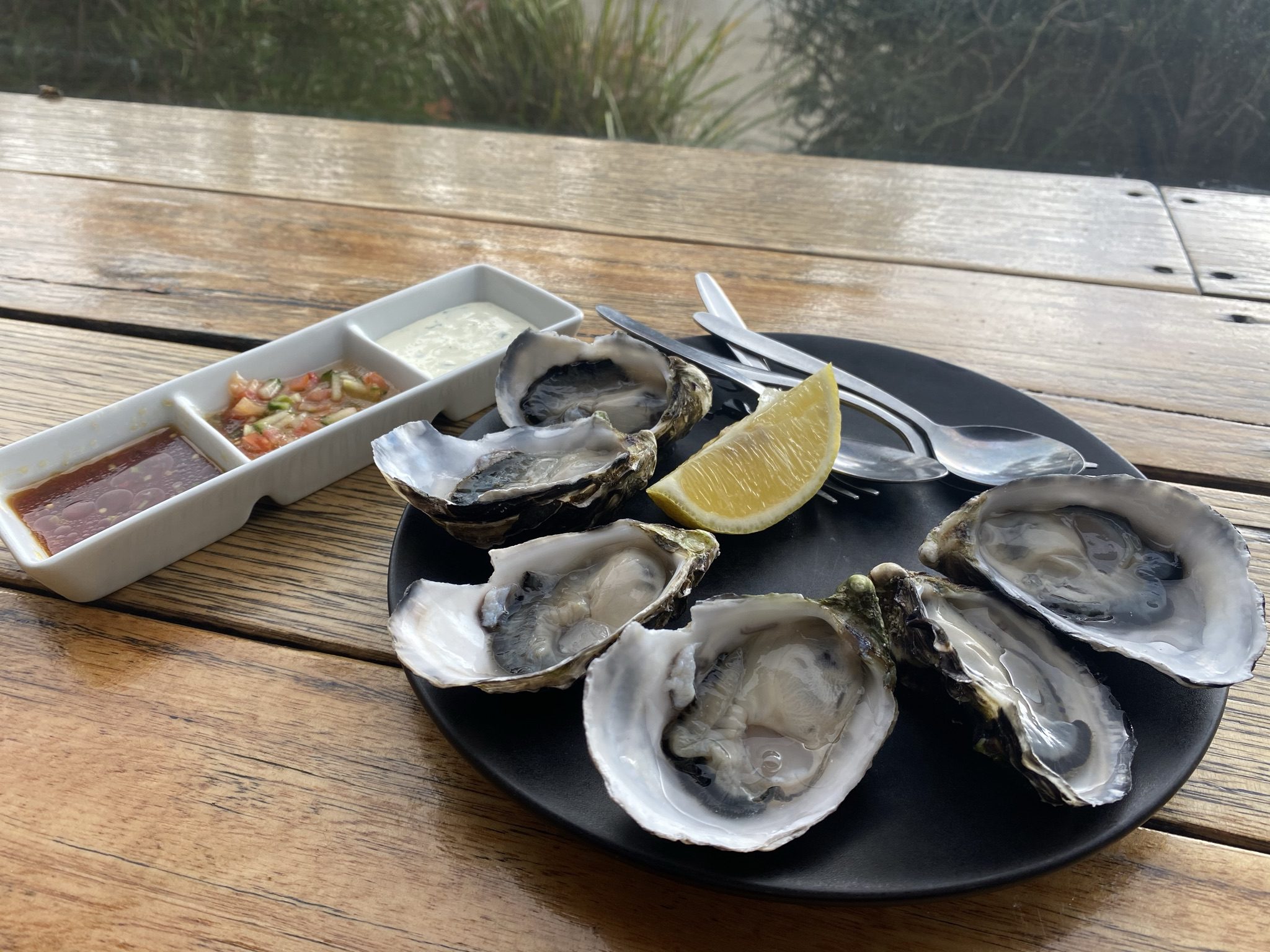
The historic Cape Bruny Lighthouse (built 1836) is right at the very bottom of Bruny Island, offering magnificent cliff top views of the ocean.
Adventure Bay is the most beautiful beach on Bruny Island, especially at sunset.
1 night is probably enough on Bruny Island to see all of the sights and enjoy the artisan food.
On the way to/ from Bruny Island, be sure to check out Willie Smith’s Apple Shed.
It’s a renowned cider distillery and apple orchard in the Huon Valley, offering cider tastings, delicious food and epic apple pie.
Stop 3: Richmond
The perfect Tasmania itinerary isn’t complete without a stop in Richmond.
Richmond is a charming heritage town just 25km from Hobart.
It’s famous for the Richmond Bridge, built in 1823 around the time of the town’s first settlement.
The golden sandstone arches crossing the water are an essential stop on the Tasmania road trip itinerary for photographers.

A walk around the wonderful town feels like you’ve gone back to old England, as there are many stone Anglican churches and heritage cottages.
Found in the Coal River region, Richmond is also home to some great vineyards like Nocton Vineyard and Every Man & His Dog Vineyard, where you can taste Tassie wine.
Richmond can be enjoyed over a couple of hours before heading to your next stop.
Stop 4: Port Arthur
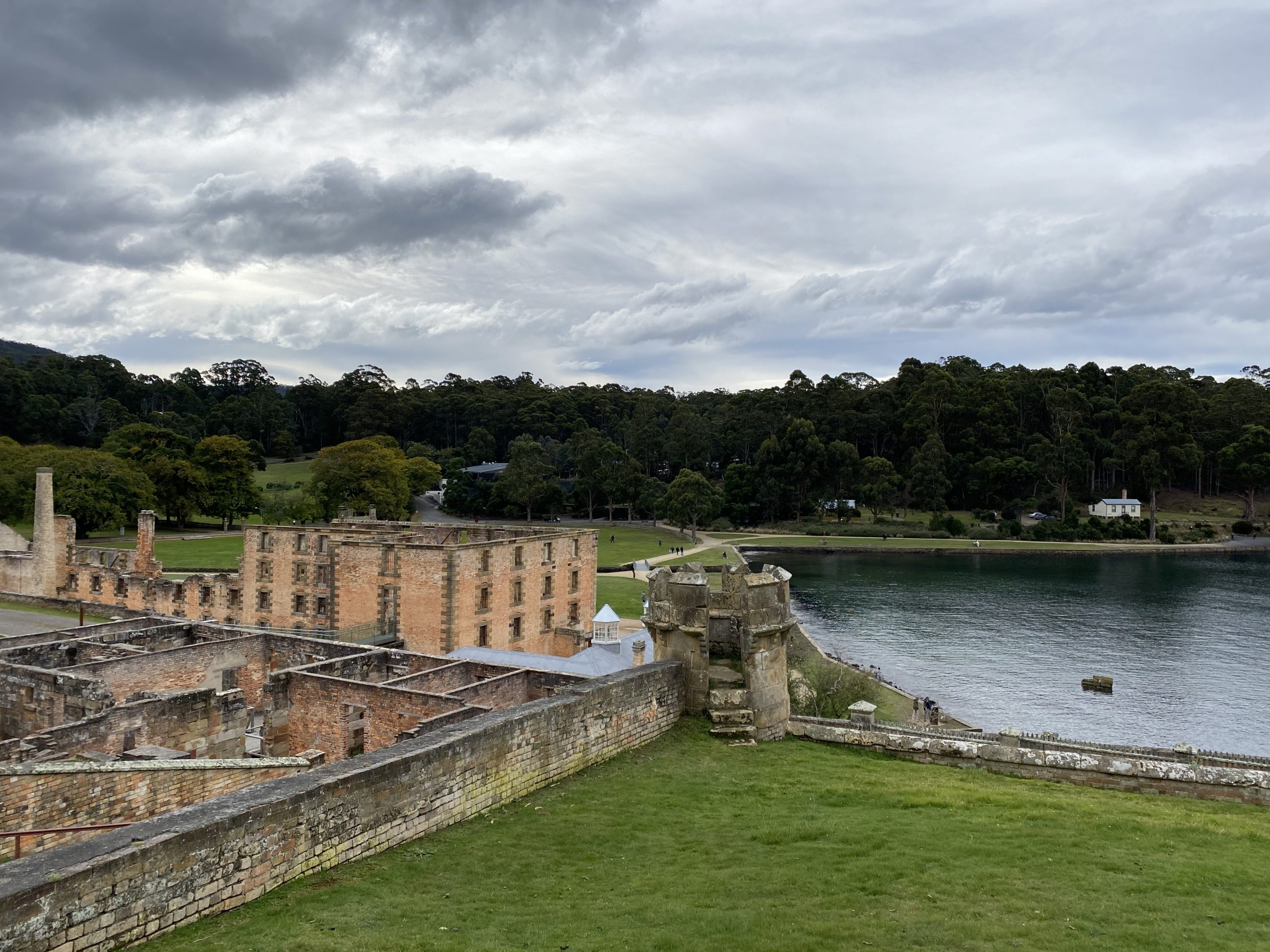
The next stop on your Tasmania trip plan is Port Arthur Historic Site.
World Heritage listed Port Arthur was a 19th century penal settlement.
Today, it’s an open air museum where visitors can learn about Australia’s convict era.
The well preserved convict site provides an insight into the life of convicts sent from Britain, who were subject to intense manual labour and mental punishment.
Port Arthur is found on the stunning Tasman Peninsula, about 90 minutes drive from the capital.
There are some beautiful beaches near Port Arthur, including Fortescue Bay in Tasman National Park and Crescent Bay just down the road from the settlement.
Put aside half a day to visit Port Arthur Historic Site and the coastline.
Stop 5: Maria Island

Maria Island National Park is a small island off the east coast of Tasmania, famous for its natural marine park.
Don’t miss Darlington Probation Station, an abandoned convict penal settlement from the early 1800s with World Heritage status.
Other must-do activities on Maria Island are the Painted Cliffs, a natural oxidation which makes the cliffs look like they have been painted by hand.
Hopground Beach is a must-visit spot on Maria Island, one of the most beautiful beaches in Tasmania.
You can get to Maria Island on a boat trip from Triabunna (full day trip).
Stop 6: Freycinet National Park
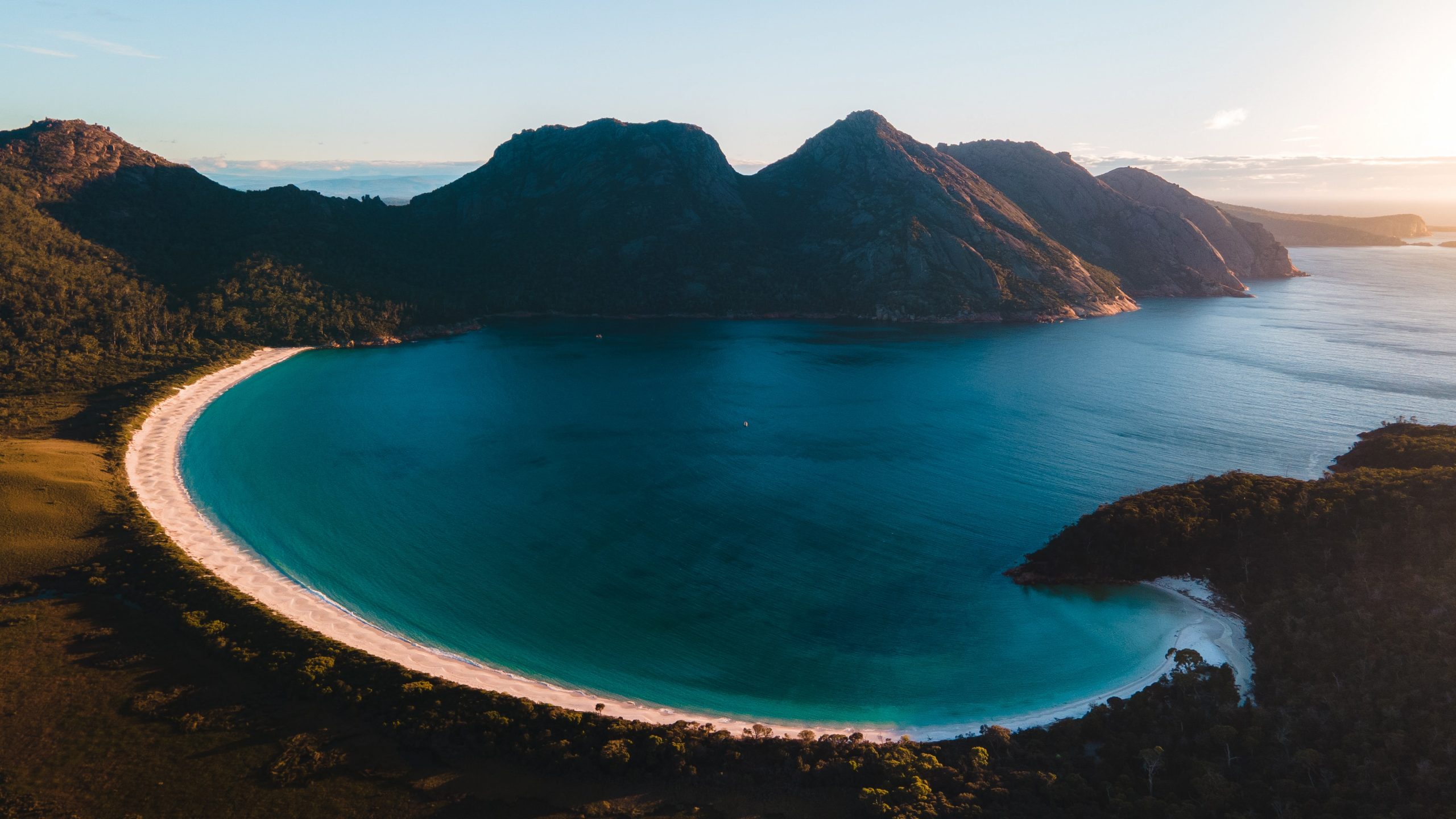
Freycinet National Park is the number one tourist attraction in Tasmania, and the biggest reason why Tasmania is worth visiting.
It’s home to the famous Wineglass Bay, which is only accessible by foot or by boat.
The crescent beach has white sand, clear blue water and is flanked by The Hazards mountain range.
My favourite way to experience Wineglass Bay is on this epic walk through Freycinet National Park, which takes you to the lookout and then down onto the beach.
Other great things to do in Freycinet National Park include kayaking in Coles Bay, tackling Mount Amos and getting fish and chips from ScaleFish Takeaway.
I would definitely recommend spending a night or two in Freycinet National Park to enjoy the hiking and watersports on offer.
After checking out Freycinet National Park, you need to stop at Devil’s Corner Vineyard and Cellar Door.
The highly acclaimed winery offers wine tasting overlooking the ocean, along with great food.
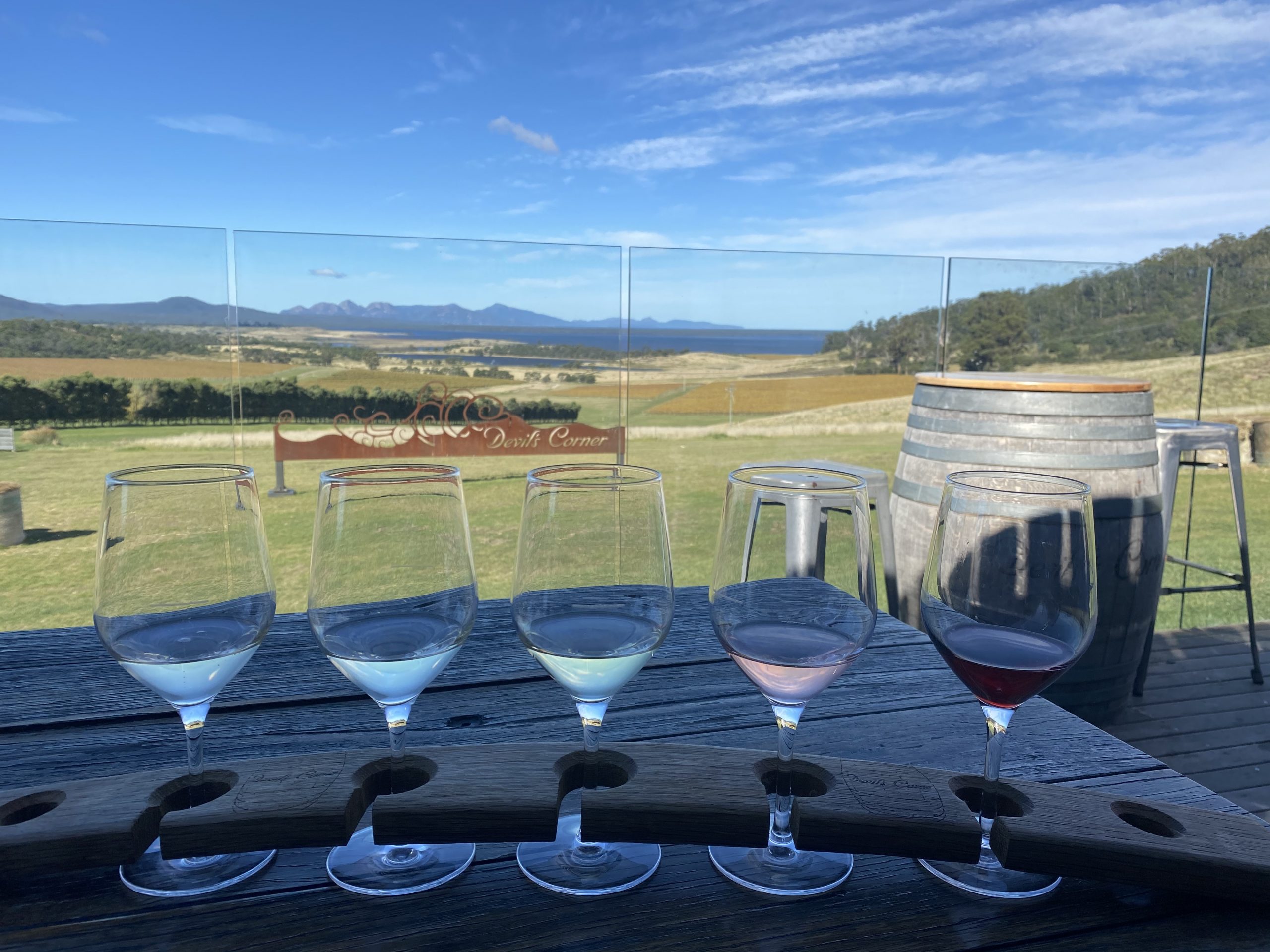
Stop 7: Bicheno
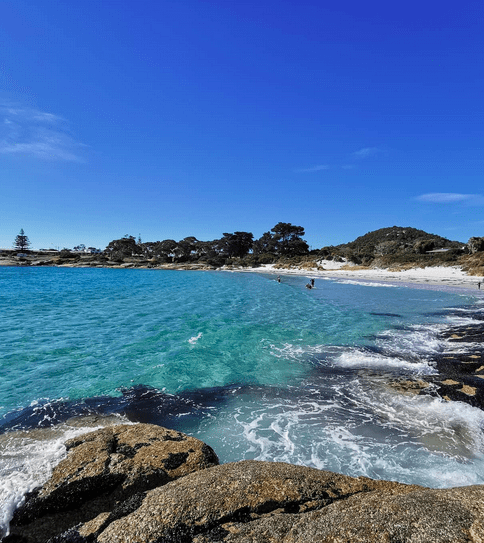
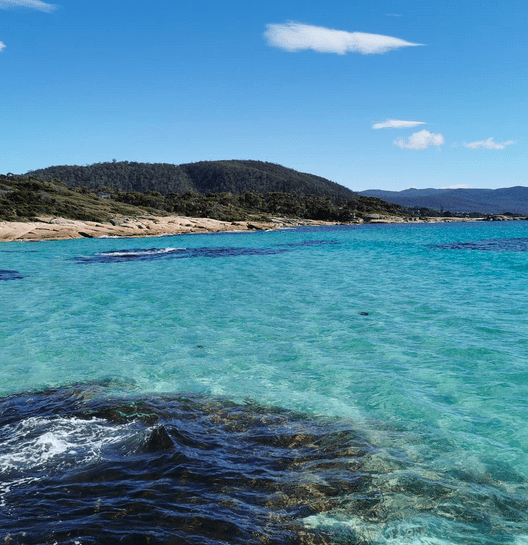
Bicheno is a former whaling town on the coast just north of Freycinet National Park.
It’s famous for being home to the best scallop pie in Tasmania, from Blue Edge Bakery.
Bicheno is only small and it can be enjoyed in a couple of hours.
Don’t miss Whalers Lookout, as well as Bicheno Blowhole.
Bicheno is also home to some of the most beautiful beaches in Tasmania, including Waubs Beach, Redbill Beach & Denison Beach.
Stop 8: Bay of Fires
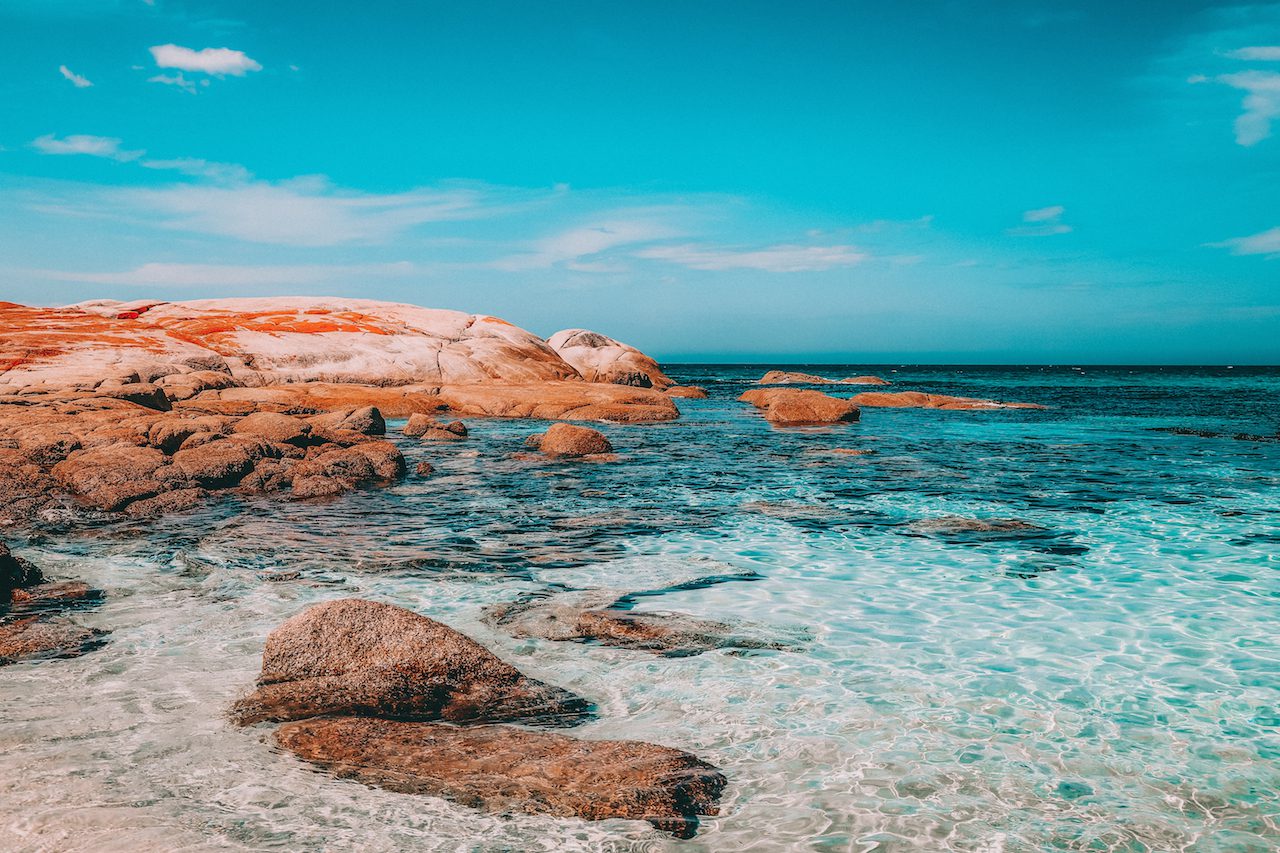
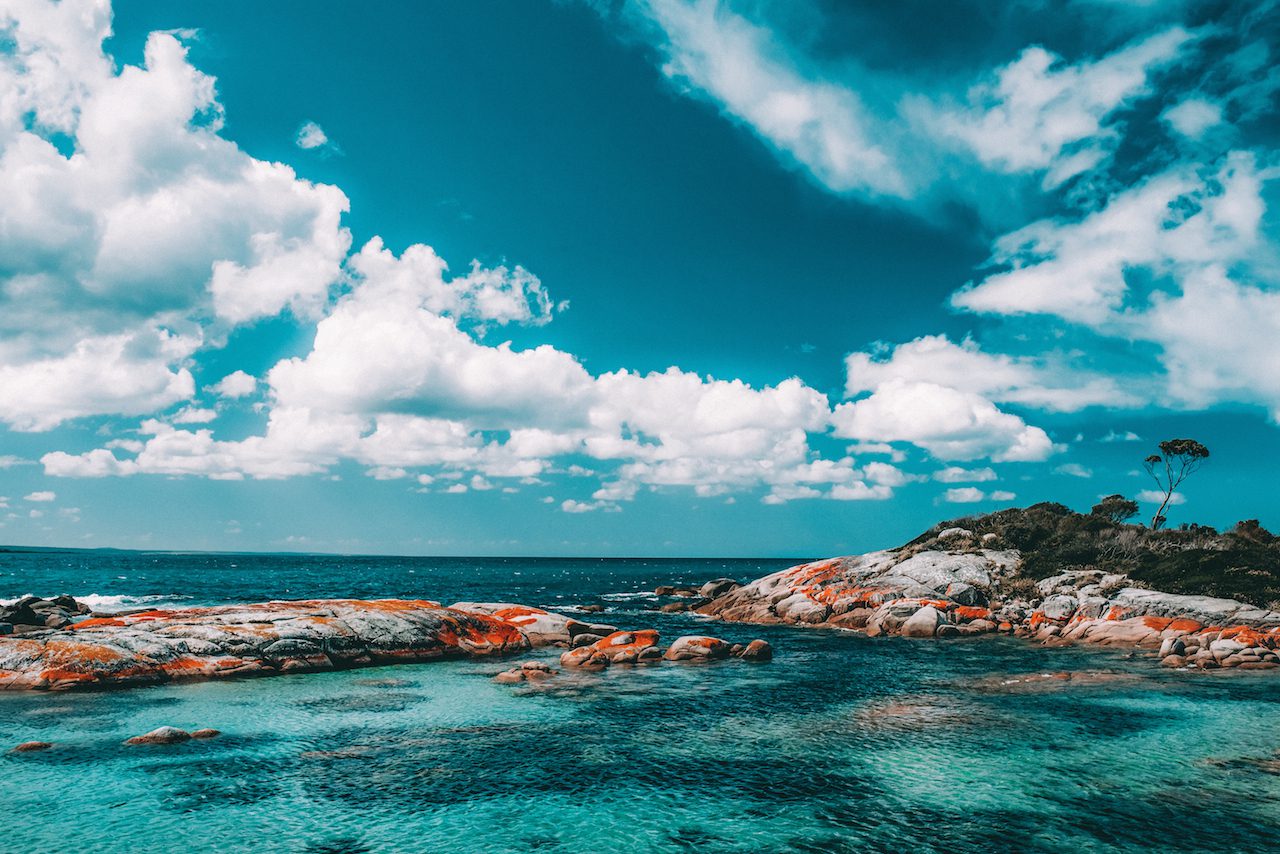
When people ask me ‘Is Tasmania Worth Seeing?’ , I just show them a photo of the Bay of Fires.
Bay of Fires is a conservation area famous for its fiery orange rocks and clear turquoise water.
The 50km stretch of coastline is home to Tasmania’s most stunning beaches, which are incredibly clean and quiet.
The best locations to visit for the fiery orange rocks in Bay of Fires are Binalong Bay and Suicide Beach.
Another amazing thing about Bay of Fires is that you can camp for free on the beach.
This was one of my best experiences in Tasmania – going to sleep listening to the ocean and waking up to the most epic sunrise.
If you like seafood, be sure to grab some oysters from the highly rated Lease 65 just down the road in St Helens.
Enjoy them by the beach with a glass of wine from Devil’s Corner Winery (stop 6).
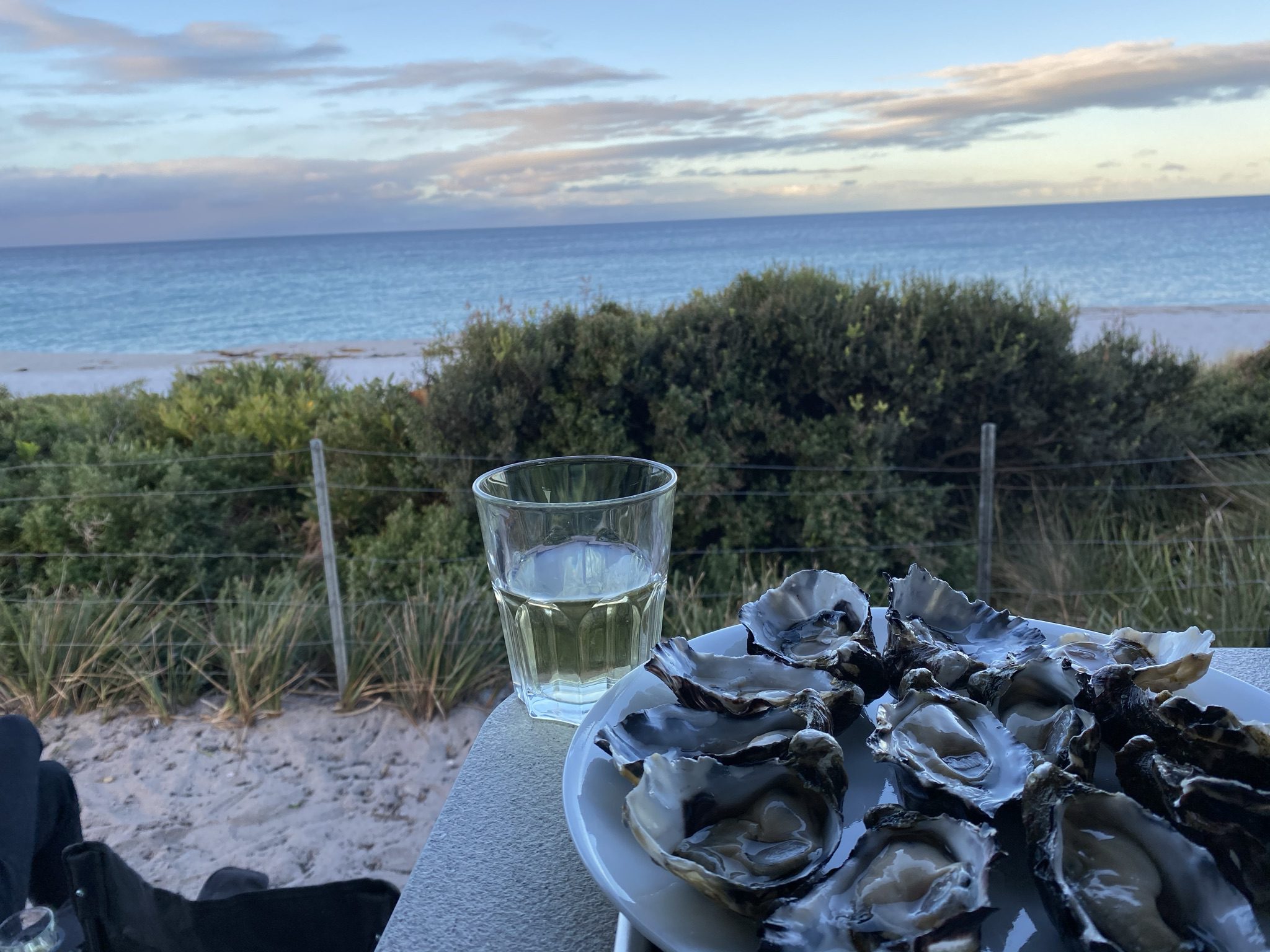
Tasmania is very safe to visit (probably one of the safest places in the world for tourists!), so if you fancy trying out wild camping – do it here!
Stop 9: Halls Falls
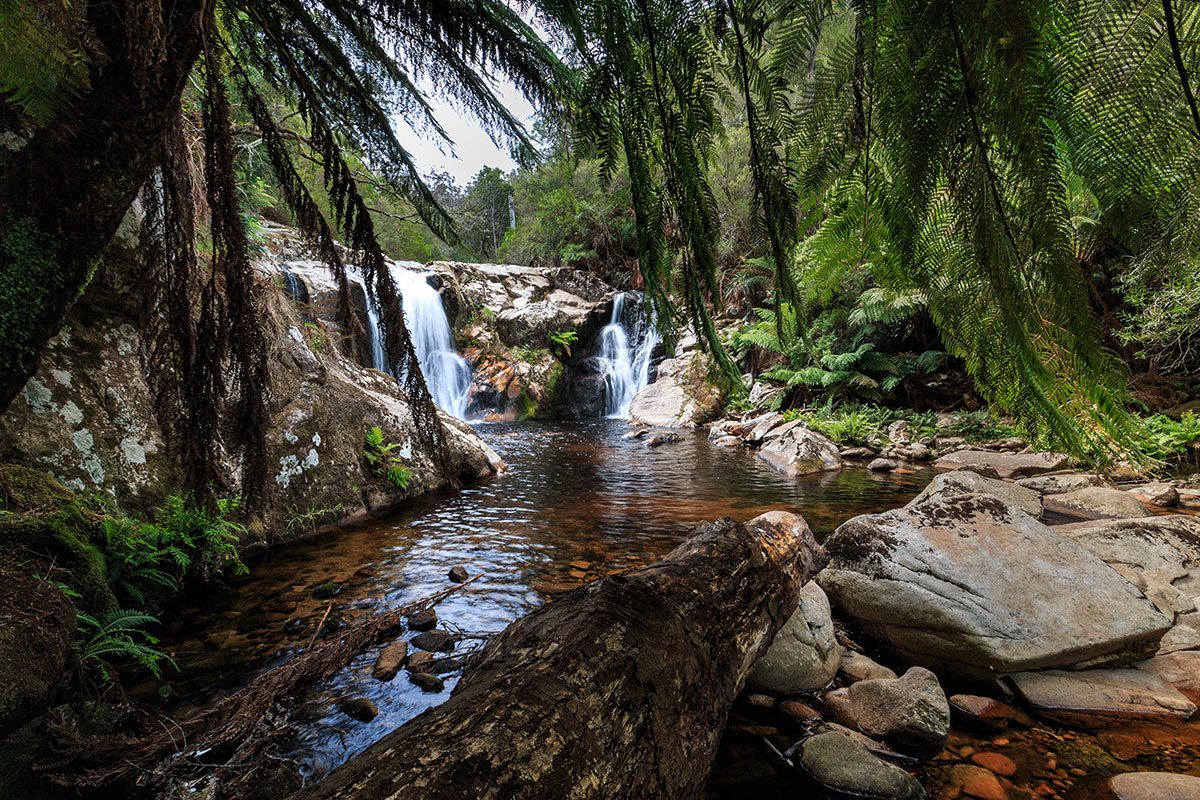
The next stop on your Tasmania vacation is hidden gem Halls Falls.
Halls Falls in Pyengana is a bliss spot where waterfalls are surrounded by lush rainforest.
Swimming is possible in the clear blue water, if you can brave the temperature!
Halls Falls is not too far from Bay of Fires, about a 30 minute drive.
Stop 10: Little Blue Lake

If you’re looking for a unique thing to do in Tasmania, Little Blue Lake is a great choice.
Little Blue Lake is one of the most photographed spots in Tasmania.
Found in the South Mount Cameron area, Little Blue Lake is a natural phenomenon which took place during Tasmania’s mining years.
The lake was originally a mining hole and has lots of minerals at the base, which makes it a dazzling aquamarine colour.
Despite the stunning colour, please don’t swim in the lake as the mineral content is very high.
Stop 11: Bridestowe Lavender Estate
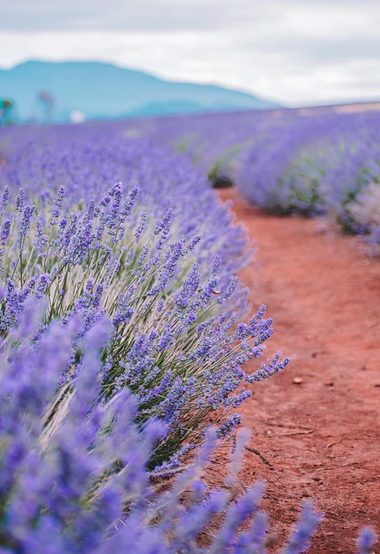
Bridestowe Lavender Estate in north east Tasmania has become a bit of an Instagram sensation in recent years.
During Tassie summer (Dec-Feb) the lavender bushes are in full bloom and create a carpet of bright purple as far as the eye can see.
When thinking about what time of year is best to visit Tasmania, summer is the obvious choice for the warmest weather and to see the fields of lavender.
Don’t miss the amazing lavender ice-cream and lavender lattes either!
When choosing what to do in Tasmania, Australia you can’t miss Bridestowe Lavender Farm.
Stop 12: Launceston

Launceston is a riverside city in Tasmania’s north.
When tourists ask ‘Is It Better To Go To Launceston Or Hobart?’ I have to say Hobart, BUT Launceston is also cool and worth visiting.
It’s most famous for the beautiful Cataract Gorge, a river gorge with hiking trails, a swimming pool and a chairlift.
Spend around 24 hours in Launceston, checking out Queen Victoria Museum & Art Gallery and Josef Chromy Wines for wine tasting in an idyllic setting.
For foodies, don’t miss the best coffee at Amelia Coffee Co. and brilliant lunch and dinner at Brisbane Street Bistro.
After leaving Launceston on your way to Stanley, don’t miss Boat Harbour Beach, another one of the most beautiful beaches in Tasmania.
Stop 13: Stanley
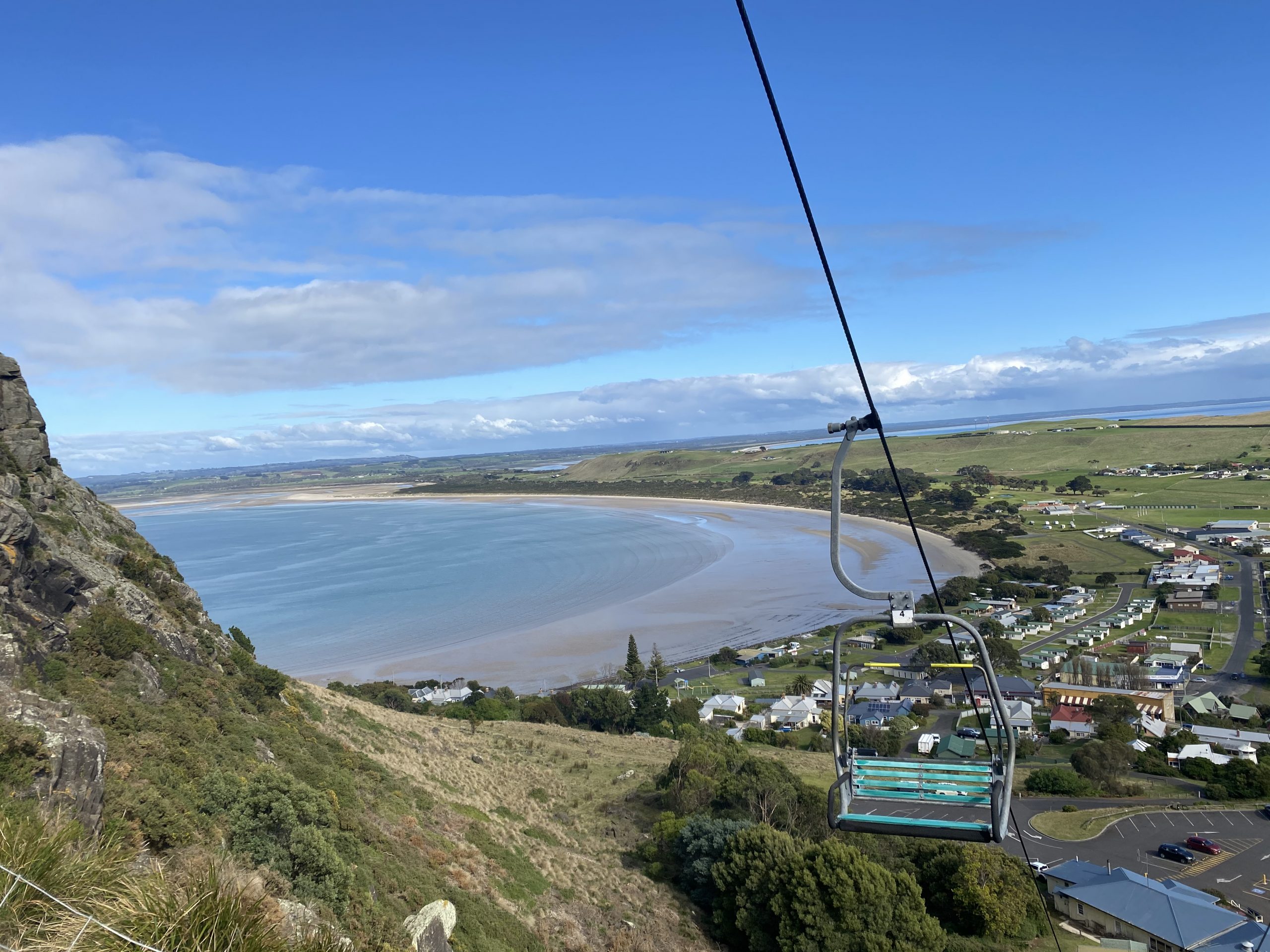
Stanley is a small heritage town on the north coast of Tasmania, flanked by the famous ‘Nut’.
‘The Nut’ is an ancient volcanic plug, with a chairlift and hiking trails.
We chose to walk up to the top of the Nut, which is a steady incline and requires a moderate level of fitness.
Once you’re at the top, you’ll be rewarded with panoramic views of the ocean and nature trails through protected grassland.
Once back down in Stanley, take a wander down the charming main street (which feels like you’ve gone back to the 1800s!).
You can grab a lovely lunch at Touchwood Café or Marleys, and Stanley Wine Bar is a quirky spot to try some local wine.
Stop 14: Cradle Mountain

When considering what to see in Tasmania, Cradle Mountain should be at the top of your bucket list.
Cradle Mountain is found in the Tasmanian Wilderness World Heritage Area.
The dramatic peaks of the mountain sit within Lake St Clair National Park, offering brilliant hiking trails and epic views.
The best walk at Cradle Mountain is the Dove Lake Circuit.
The moderate 2 hour walk follows the perimeter of the lake with great views of the peaks as well as rainforests and the famous Dove Lake Boat Shed.
Accommodation options in the area are limited so book in advance.
Choose Discovery Parks Cradle Mountain for cabins, budget dorm rooms and campervan spots.
For a more luxury experience, Cradle Mountain Lodge offers a cosy retreat that’s just on the edge of the protected national park.
After getting your mountain fix at Cradle, take the short drive down to Lake St Clair to see that spectacular glassy water for yourself.
An optional final stop on your Tasmania itinerary is Strahan.
Strahan is a former port on Tassie’s West Coast offering brilliant natural beauty.
Strahan is a very isolated area, so only check out the West Coast if you have an extra couple of days available on your Tasmania holiday itinerary.
